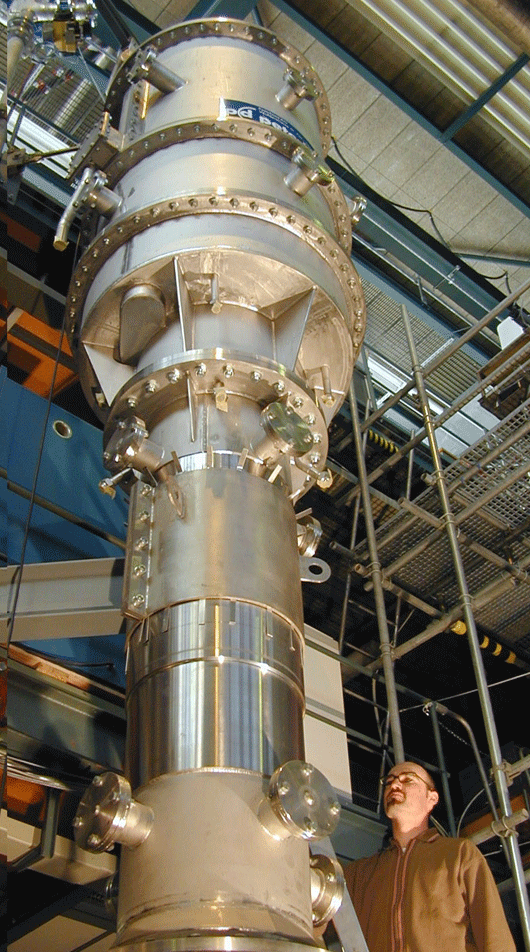ARTIST
ARTIST − Aerosol Trapping in the Steam Generator: the international ARTIST project examines PWR accident sequences involving core melt-down, steam generator heating tube rupture and faulty steam generator insulation. In accident sequences of this sort, radioactive substances may bypass the safety systems and be discharged directly into the environment. Although present knowledge suggests that their frequency of occurrence is exceptionally low, they are nevertheless important. The ARTIST project examines the quota of fission products released in such accidents that is retained in the steam generator in the form of aerosols and droplets. The ARTIST-II section of the project launched in 2009 comprises five sub-projects (phases I, II, V, VI and VIII) focusing on various individual aspects of aerosol and droplet transport which have not yet been considered, and which became more significant in the course of ARTIST-I. These phases deal with different areas inside the steam generator. The depositing and removal processes are studied at different gas velocities, aerosol sizes/materials and water levels in the steam generator.
One of the objectives in 2009 was to develop methods of producing aerosols in high concentrations, and in such a form as to minimise the resuspension of aerosols deposited on surfaces. This is important in project phases I and II for aerosol retention in the steam generator tubes or in the area near the heating tube rupture. The planned experiments in phases V (aerosol retention if the secondary side of the steam generator is flooded) and VIII (aerosol retention if the droplet separator is flooded) were carried out successfully. In the four tests in phase V, aerosol retention at minimum and maximum gas throughput rates was determined for two different aerosol sizes. According to these tests, the retention increases as the gas throughput rate and the particle size become greater. One of the tests in phase VIII was carried out with minimum gas throughput, whereas in the other two tests the gas throughput was increased from the minimum to the maximum values in four stages. Retention is very high in all the tests, and is virtually independent of gas throughput and particle size. The separation process is dominated by the high water feed and the complex flow behaviour in the flooded droplet separator.


